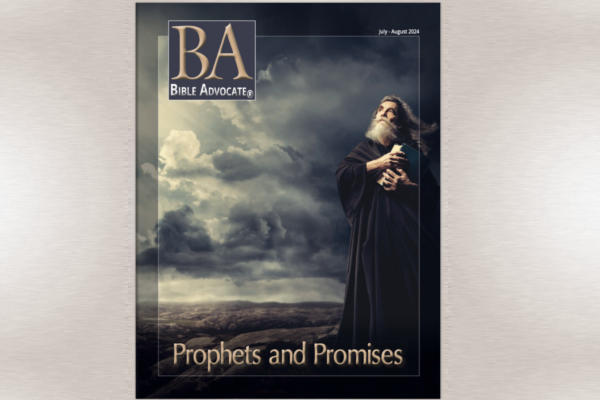The Early Church
In the last two issues we’ve looked at the personal faithfulness of two giants of the Old and New Testaments, Abraham and Peter. We have examined the relationship of living faith between individuals and our heavenly Father, but faithfulness is also a communal reality. We are God’s people, so what does a faithful church look like?
The answer is found on every page of the Acts of the Apostles. There we read that the first church is born and empowered by the Spirit in her mission to be witnesses of Jesus Christ to the “end of the earth” (Acts 1:8). We cannot cover all these stories here, but let’s join Apostle Paul and get a glimpse of the two churches he planted in Philippi and Ephesus, and what characterized their faith.
Joy in Philippi
On his second missionary journey (Acts 16), Paul and his fellow evangelists have come to Macedonia. One Sabbath they join some women riverside outside Philippi for prayer, and there meet a woman named Lydia. As Paul shares God’s Word, “the Lord opened her heart to heed the things spoken by Paul” (v. 14). She goes into the river and is baptized with her household. Just as Lydia’s heart opens, so does her home to these missionaries. She “begged us,” Luke recalls, “if you have judged me to be faithful to the Lord, come to my house and stay” (v. 15). With her baptism and act of hospitality, the Philippian church is born.
But just downstream from this tranquil beginning the rocks of persecution threaten. Back in the city, and heading to prayer again, Paul delivers a slave girl from an evil spirit of divination in the name of Jesus Christ. Her owners are furious, seeing that they have lost their money-maker. They drag Paul and Silas to the authorities, where they are accused, beaten, and tossed into jail (vv. 16-24).
At midnight, deep in the prison with feet fastened in stocks, these two witnesses of the way of salvation pray and sing hymns to God, and the prisoners listen to them (v. 25). We expect prayer. It’s been mentioned three times since we arrived in Philippi. But singing? This is the only place in Acts where we read of singing. Joy in a jail, of all places!
At this moment, an earthquake shakes the prison. Chains are loosed, but no one tries to escape. The suicidal jailor, fearing the worst, discerns the only relevant question, given the circumstances: “What must I do to be saved?” Paul replies simply, “Believe on the Lord Jesus Christ” (vv. 26-31). The jailor does and is baptized with his household. There’s more rejoicing as wounds are washed and bread is broken. The story of the church in Philippi ends just as it began — back in Lydia’s house (v. 40). But we’ll find the themes of prayer and rejoicing later in Paul’s epistle to the Philippians.
Tears in Ephesus
We glimpse the faithful church from a different perspective as we join Paul and his fellow evangelists in Ephesus on their third missionary trip. He spent three years in Ephesus, and his affection for the church is evident in his emotional farewell speech (20:17-38).
Paul recalls his tireless teaching among them, through tears and trials, testifying of “repentance toward God and faith toward our Lord Jesus Christ . . . and preaching the kingdom of God” (vv. 19, 21, 25; cf. 19:1-10). Paul never “shunned to declare . . . the whole counsel of God” and nears the end of his “race with joy” — the ministry Jesus Christ gave him “to testify to the gospel of the grace of God” (20:24-27). Now as Paul prepares to say goodbye to the church, he is concerned for the flock and its shepherds, “the church of God which He purchased with His own blood” (v. 28).
That God redeemed His church through the precious blood of His Son is the heart of Paul’s gospel of grace and kingdom counsel, but there are also savage wolves that would not spare the flock. The “Holy Spirit has made you overseers,” he tells the elders. “Therefore watch, and remember that for three years I did not cease to warn everyone night and day with tears” (vv. 28, 31). Paul’s teaching is urgent.
Paul movingly commends his friends “to God and to the word of His grace, which is able to build you up and give you an inheritance among all those who are sanctified” (v. 32). To these elders he commends Christ’s example of leadership, and his own: to not be covetous or greedy but hardworking, caring for the weak. “Remember the words of the Lord Jesus . . . ‘It is more blessed to give than to receive’” (v. 35). Finally, Paul kneels and prays with them, and afterward they weep together (a third reference to tears) and kiss him; they will not see him again (vv. 36-38).
It’s a sad parting, but the themes of his farewell — God’s grace, our inheritance, and watchful spiritual warfare — he will teach again in his epistle to the Ephesians.
Stick together
What does a faithful church look like? The churches of Philippi and Ephesus tell of the core truths and traits of faithful churches everywhere: kingdom and repentance, teaching and hearing the Word; prayer, hospitality, redemption, and baptism. We see passion and peace, urgency and confidence as the Spirit moves the church.
By the grace of God, faithful churches of Jesus know the joy of Philippi and the tears of Ephesus. We share both in and through all circumstances together.








